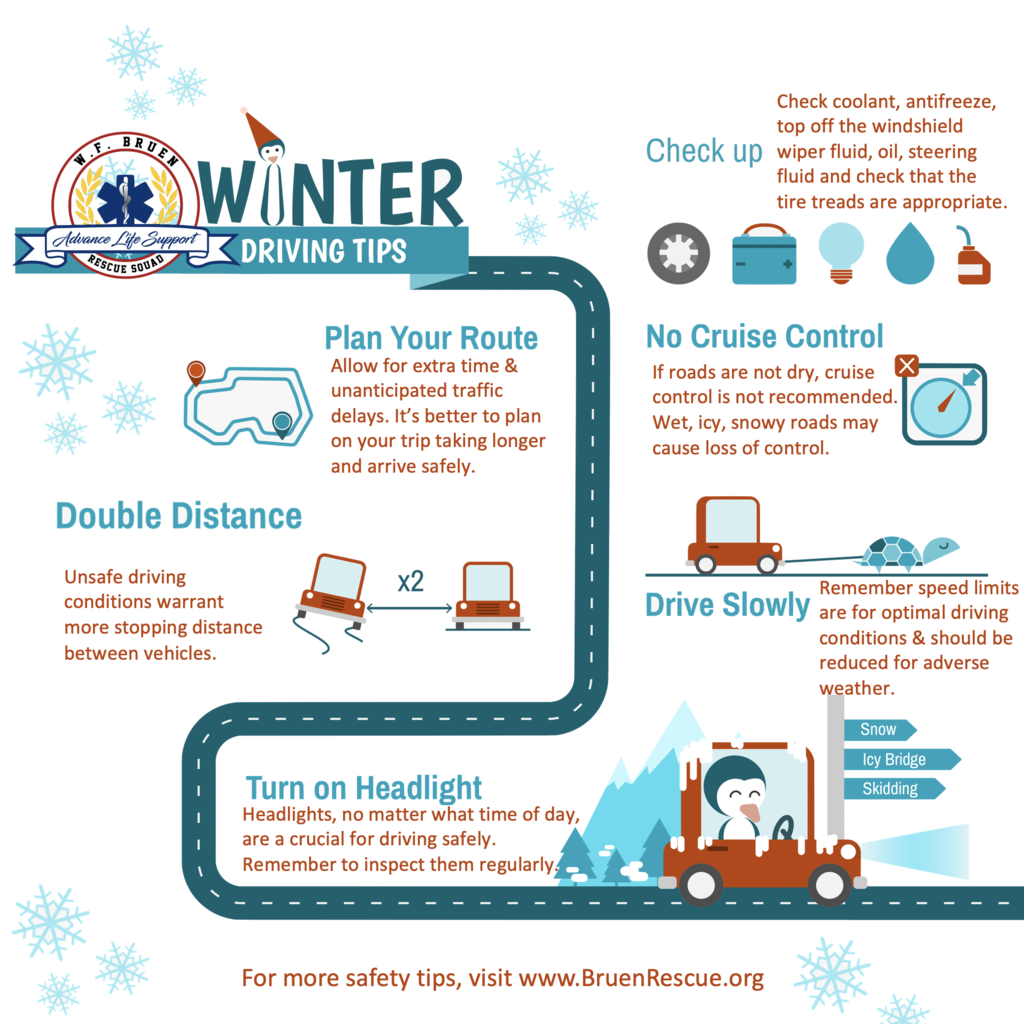
Winter Driving Safety Tips
Winter driving can be challenging, especially for new drivers or those not familiar with our lovely Northeast winters. Around 30% of hospitalizations and injuries from accidents and injuries occur due to adverse winter driving conditions, rain and fog.
It is essential that during the winter season we have the vehicle ready for any unforeseen event that may occur. The following are essential tips for driving safely this winter:
- Extra time: Allow for extra travel time and unanticipated traffic delays. It’s better to plan on your trip taking longer and arriving safely.
- Inspect the vehicle: Before embarking on a trip be sure that your car is in the right condition to travel, consider the potential for unexpected storms. Check the coolant, antifreeze, top off the windshield wiper fluid, oil, steering fluid and check that the tire treads are appropriate. Consider a set of all seasons or winter tires for the heavy snow. Proper tires offer a stable and optimum pattern for grip on poorly adherent surfaces.
- Use of the safety belt: It’s the law and it makes good common sense for all passengers to be belted while the vehicle is moving; Rear seat passengers are not exempt from injury.
- Driving smoothly: Adapt the speed of the vehicle to the weather conditions. To operate safely, make sure to avoid sudden changes in direction or swerving. Making gentle turns will decrease the odds of losing control of your vehicle. If it is necessary to make a sharp or fast steering wheel turn, the will vehicle start to understeer, and you should always correct the direction by making harmonic movements from one side to the other until the vehicle stops, steering INTO the skid.
- Maintain safety distance: It is important to drive with a proper driving safety distance and increase that distance during adverse weather conditions, since the time it takes to stop the vehicle on snow or ice is much greater than when it is dry. Remember speed limits are for optimal driving conditions and should be reduced for adverse weather.
- Equipment: We recommend keeping the following in your vehicle in case of emergencies: a flashlight, warm blankets, reflective vest, spare change of clothing and a scraper or brush to remove snow and ice. Remember, snow must be removed from the car before driving otherwise it becomes a hazard to others.
- Other recommendations: Check the condition of the roads before the trip, keep your tank at least half full and when parking, leave the windshield wipers raised to make it easier for snow removal and lessen the likelihood of freezing them to your windshield.
Driving according to the type of adverse weather
- With snow and ice: It is likely that in the winter season the snow and ice are abundant, so it is advisable to move slowly. We must take special care with brakes, since they do not usually work properly on icy roads. Drive with great caution, increase your following distance between vehicles and drive slowly.
- With wind: When the wind blows excessively strong, we must slow down the vehicle and firmly hold the steering wheel, especially if you are passing a large vehicle.
